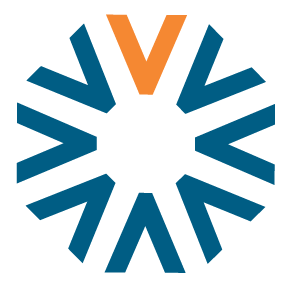Blog
A Concise Guide To Workforce Management
Wednesday June 15, 2022
At a glance:
– Introduction
– What Is Workforce Management (WFM)?
– Why Is Workforce Management Important?
– Examples Of Workforce Management
– Key Advantages Of Workforce Management
– What Are Workforce Management Tools and Why Are Businesses Opting For It?
– How Vocantas Facilitates Workforce Management
– In Conclusion, What Is Good Workforce Management?
The success of any organization can be envisaged by looking at the relationship it shares with its employees. After all, an inherent part of running a successful business is to effectively manage one’s workforce in all aspects. In order to be able to do so, many businesses are now prioritizing workforce management as well as adopting powerful workforce management tools to stay ahead of the curve. This guide covers everything that you need to know about workforce management.
What Is Workforce Management (WFM)?
In simple words, Workforce Management (WFM) refers to a set of processes devised to optimize employee efficiency and performance in an organization. It covers everything right from forecasting demand, planning and scheduling, attendance and tracking to leave management, performance evaluation, compliance with laws and regulations and the necessary administrative tasks. Nowadays, most organizations are opting for the latest workforce management tools suitable to their business needs to achieve their WFM goals.
Why Is Workforce Management (WFM) Important?
Changing times and cutthroat competition have compelled businesses to think outside the box and remodel their overall approach to sustain and succeed. Over the years and especially after the COVID-19 pandemic, employees have adapted to remote and hybrid working modules apart from the traditional in-office work module. Furthermore, their lifestyle choices and preferences have also evolved and prioritizing work-life balance has now become a way of life.
Workforce Management is important to counter these unique challenges, keep up with the dynamic workforce trends and continuously upgrade processes in order to prioritize employee wellbeing. After all, employees are the true assets of any organization and investing in their well-being essentially means investing in the long-term success of the organization. WFM is a win-win for both – the employees as well as the organization!
Examples Of Workforce Management (WFM)
Essentially, the WFM process involves performing a set of different activities pertaining to a company’s human resources to build and maintain a high-powered, productive workforce. Let’s break down the WFM process into individual operations to understand it better –
-
Collection of Data –
WFM starts with responsible data collection. It is almost impossible to make future predictions without data like past records, policies, trends, demand and supply channel gaps, costing details, performance reports, etc. Hence, the fundamental operation for successful WFM is accurate data collection. -
Workload Forecasting –
The next step involves workload forecasting. By analyzing all the data at hand, organizations predict their future workload. Performed intelligently, it results in impeccable planning and scheduling to achieve operational efficiency. On the other hand, poor workload forecasting can prove to be detrimental to the business. -
Workforce Planning and Scheduling –
After forecasting, information regarding the eligibility, skillset and availability of the workforce is pulled together for workforce planning and scheduling. Planning and communicating staff schedules and responsibilities well in advance plays an important role in maximizing employee engagement. -
Time Tracking and Attendance –
Another important element concerning WFM is tracking employee attendance and time on a day-to-day basis. Tracing this information is imperative to every organization not only for payroll management but also to monitor progress for specific, short-term goals. -
Compliance with Laws and Regulations –
For all businesses, complying with the changing laws and regulations in their industry is an absolute must. Workforce management ensures that this is executed diligently and all mandatory requirements are fulfilled in time. -
Performance Evaluation –
Last but not the least, WFM involves employee performance evaluation at regular intervals. Doing so, helps businesses detect important channel gaps at the right time, enabling them to take the necessary steps promptly. Besides, it also provides valuable insights to further optimize the workforce and maximize profits.
Key Advantages Of Workforce Management (WFM)
As mentioned earlier, workforce management is abundantly beneficial to employees as well as the organization. In fact, markets forecast the global workforce management market size to grow from USD 6.0 billion (in 2020) to USD 9.3 billion by 2025! Let us dive deeper and have a look at some of the key advantages of WFM –
1. Ensures Operational Efficiency –
Through efficient time and human resource allocation, WFM enables organizations to make intelligent decisions at the right time. Moreover, it also results in reduced personnel costs for the organization by avoiding understaffing and overstaffing, implementing effective communication channels and eliminating lengthy, obsolete processes. All in all, it ensures operational efficiency i.e. it enhances the ability of an organization to deliver quality output through profitable resource management.
2. Boosts Employee Morale –
Correspondingly, WFM takes into account employee preferences and prioritizes employee well-being. This promotes a healthy work culture at the organization, resulting in improved employee morale and higher employee engagement. Apart from engendering excellent productivity levels, WFM also leads to a lower attrition rate for the company as it satisfies the work-life balance needs of its workforce perfectly.
3. Fosters Organizational Growth –
In essence, data-driven WFM ensures that the right people are assigned to the right job at the right time. This is achieved by analyzing past data and forecasting the demand realistically, planning the necessary resources efficiently and scheduling ahead of time. Furthermore, it involves tracking progress in real-time and making any necessary changes promptly with strong and clear communication, to ensure smooth functioning and optimum productivity at all times. This, in turn, facilitates and fosters organizational growth in the long run.
What Are Workforce Management Tools And Why Are Businesses Opting For It?
Workforce Management tools are basically modern-day software, developed to assist organizations to achieve maximum results out of their WFM endeavours. With the help of advanced technology, these WFM tools automate and manage all activities concerned with WFM from one centralized platform.
Some examples of WFM tool features include automated shift filling, future shift planning, late & absent reporting, employee time punch, broadcast notifications, self-scheduling, compliance monitoring, vacation planning and smart analytics.
Naturally, by means of such employee scheduling software and powerful tools, businesses can integrate and optimize their WFM processes seamlessly. This is exactly why businesses are upgrading themselves and making the switch from conventional methods to technology-driven WFM solutions – to optimize employee efficiency and maximize profits!
How Vocantas Facilitates Workforce Management
For effective WFM, apart from a powerful workforce management solution, you need a robust communication module to optimize employee efficiency and organizational performance. This is exactly where Vocantas comes into play.
A contemporary communication tool built to enhance workforce management scheduling processes, it caters to diverse industries that include financial services, gaming, healthcare, hospitality, manufacturing, retail, etc. For over 18 years, Vocantas has been providing extensive support to schedulers with respect to shift planning and tackling staffing challenges through real-time communication.
As the industry leader in communication tools, Vocantas offers smart automation to assist schedulers with shift planning while also providing them with the ability to quickly react to any staffing challenge. Essentially, it replaces manual phone calls and cumbersome spreadsheets with a platform that easily connects with the staff to manage and fill shifts, reduce costs, boost employee morale, and save time! Mentioned below are some of the key solutions provided by Vocantas that have facilitated workforces to function at optimal efficiency –
1. Automated Shift Filling
As opposed to the manual, time-consuming employee callout processes, Automated Shift Filling (ASF) contacts your employees via text (SMS), phone(IVR), mobile app, web portal, and email to offer them open shifts. It lets your employees respond easily via the same channels. Upon receiving these responses, ASF recommends a list of employees to award the shift, or automatically awards using your business rules so you can fill more shifts proficiently.
2. Future Shift Planning
Future Shift Planning allows schedulers to share shift offers with the workforce so they can fill schedules far in advance. It notifies employees regarding multiple available shifts through a single automated callout and prompts them to mark their availability in Vocantas’ employee portal. Essentially, it automates shift management so schedulers can fill shifts within minutes and make the necessary provisions as per real-time updates, thereby boosting organizational efficiency.
3. Late & Absent Reporting
Late & Absent Reporting provides your organization with access to a completely automated and integrated solution, eliminating costs and time associated with manual inbound calls. This feature enables employees to call or text a centralized number to register that they will be absent or late. Managers are instantly informed and scheduling systems are updated in real-time to assist in smart decision-making. Moreover, real-time reports are also readily available for all tracking and auditing purposes.
4. Employee Time Punch:
Next, Vocantas’ Employee Time Punch feature allows employees to easily punch into and out of shifts using SMS text or interactive phone calls. They simply have to contact a centralized number and shift statuses are updated instantly in the WFM system. Besides, it allows employees to transfer job locations in order to record time punches in different locations too if required for tracking purposes. This feature is significantly beneficial for simplifying day-to-day workflows and effective time and cost management.
5. Broadcast Notifications:
Another feature of Vocantas is sending notifications to your workforce instantaneously. Broadcast Notifications allows you to inform your staff about any important updates, emergencies, or facility shutdowns effortlessly using a communication method that works best for them. Concurrently, it lets you view your notification’s status in real-time to ensure successful delivery. Lastly, it also creates and maintains detailed reports of these interactions for your future reference.
6. Self Scheduling
Self Scheduling allows employees to actively update when they are available to work and when they prefer to be contacted for open shifts. They can outline their weekly availability, giving schedulers full visibility of who can take on shifts when populating their calendars. While part-timers outline their days and times as per their availability, full-timers can also choose their overtime hours from the available slots. All in all, this boosts overall productivity as well as employee engagement.
7. Vacation Planning:
Thereafter, Vocantas’ Vacation Planning feature helps you plan your enterprise-wide vacation scheduling as well. Using the employee portal, your staff can select their vacation preferences during peak times with priorities set by your internal rules. After evaluating the vacation plan, it notifies your schedulers of who should be awarded the preferred vacation week based on accruals, seniority and any other rules configured in your WFM system. Ultimately, after receiving approval from the company’s end, it notifies employees with their confirmation or asks them to select another vacation time.
8. Smart Analytics
Lastly, with the help of Smart Analytics, you can analyze your scheduling efficiency and optimize your workflows. It provides you with information like how long it takes to fill shifts, which communication methods work best to reach your staff, etc. as well as lets you filter these insights based on job type, department, or employee pool. Additionally, it is also adept at running side-by-side comparisons to industry-standard metrics to help you uncover areas where you can optimize processes and increase efficiency.
In Conclusion, What Is Good Workforce Management?
While WFM processes may look different for every organization, good WFM for any organization is the one that optimizes two key factors seamlessly- operational agility and employee satisfaction.
If you’re looking for an effective communication module to enhance the workforce management system at your company, reach out to us at Vocantas for a free consultation. Our complete scheduling solution is fast, easy to use, reliable, and backed by outstanding customer support. Get in touch with us here.
Stay Connected!
Subscribe to our newsletter and receive all our news and updates.
Blog
Check out our
latest Blog Posts
Cutting-edge technologies, industry trends and best
practices workforce management.

Wednesday January 29, 2025
Optimizing Workforce Efficiency with Integrated Manufacturing Scheduling Software
The manufacturing industry operates on precision and efficiency. From raw material sourcing to final product assembly, every second counts. Yet,….

Wednesday January 15, 2025
Top 5 Nursing Home Software Solutions to Invest in for Efficient Operations
As staffing shortages and external factors continue to impact the healthcare industry, nursing homes face increasing pressure to provide high-quality….

Thursday December 19, 2024
Absence Management Guide: Tools to Maximize Workplace Efficiency
Managing employee absences effectively is a cornerstone of organizational success. A well-implemented absence management system not only ensures accurate payroll….





